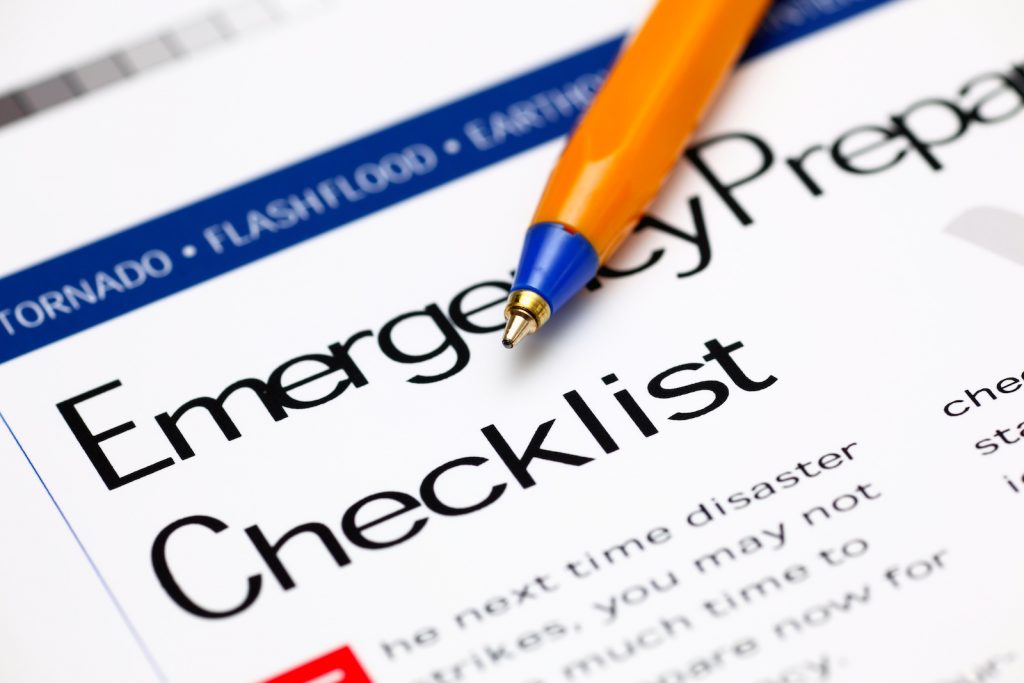It’s amazing how quickly a virus can spread throughout the world. It is always hard to fight against something that you can see out in the open. To help make sure you are in the know, we are going to look at creating a family pandemic prepardness checklist so that you can rest easy that a plan is in place if things escalate.
What is a Pandemic
According to the CDC, “A pandemic is a global outbreak of disease. Pandemics happen when a new virus emerges to infect people and can spread between people sustainably. Because there is little to no pre-existing immunity against the new virus, it spreads worldwide”. Examples include the Spanish Flu and presently, COVID-19. Pandemics usually start as epidemics, which are classified by rapid spread of a new disease across regions, such as the Zika virus. Death tolls tend to be higher in epidemics than epidemics. The most deadly pandemic was the Spanish flu, which took 100 million lives. Most pandemics in history have been caused by variations of the flu virus, since these change by season.
The word pandemic comes from the Greek words pandemos, which means “pertaining to all people”. Pandemics are characterised by a virus that is rapidly spread between people through contact. They are often worsened by travel and mobility, and pandemics transcend national borders. Humans will have little to no immunity to said new virus, and it often mutates quite quickly as it spreads.
Only the World Health Organization holds the power to declare a pandemic, and they use their discretion as to if declaring so will cause mass panic and disruption. There was notable panic when the WHO called the swine flu a pandemic in 2009, and the response brought attention to as when declaring a pandemic leads to unnecessary overspending and government precautions. However, the COVID-19 crisis is most certainly a pandemic, as we are seeing rapid global spread of a new virus that we do not yet have a cure for. The WHO recommends that countries approach pandemics by “detecting, testing, treating, isolating, and tracing” all people. These measures (quarantine and social distancing) should help slow the spread of the virus so that medical professionals have adequate time and resources to treat all patients, as well as so research development can catch up to the pace of the spread of the virus.
Why is Preparing for a Pandemic Important
According to the Center for Disease Prevention and Control, preparing for pandemics requires multidimensional planning across sectors. The objective of pandemic preparation is to minimize deaths as much as possible as well as address the economic concerns that come along with addressing a global health crisis. Countries must prepare to maintain essential services and personnel through the duration of a crisis, adn to minimize the effect on the global markets and national economy. There also must be enough medical resources on deck as well as methods to source more when necessary.
National responsibilities are delegated as a part of a national pandemic plan, as well as a core national pandemic planning committee. There are also regular risk assessments as well as check ins on the functioning and strength of all sectors, particularly in healthcare. Communication strategies must also be in place.
Creating a Family Pandemic Plan
The CDC has created comprehensive guidelines for family pandemic planning. They break these measures down into three categories: personal, community, and environmental planning.
Personal planning is the everyday actions that each of us can do to protect ourselves from a pandemic. These are hygienic procedures such as washing your hands regularly for 20 seconds and moving your mouth or nose when you sneeze or cough. Community measures are when organizations limit face to face contact and cancelling large events that will likely facilitate the spread of infections. Environmental measures are the physical cleaning measures you can do to disinfect and sanitize both hard and soft surfaces to make sure that you have as minimal exposure to bacteria as possible.
Family Pandemic Preparedness Checklist
Part of your family pandemic plan should be planning for unexpected changes in your healthcare. In a serious global health crisis, you may not be able to get routine treatment or prescriptions that you need. So, it is important to account for this during the early suspicion of a pandemic and talk to your doctor about an extra supply of your essential medications. If you have a family member who requires additional care due to a health condition or disability, you’ll also want to take into account if their primary caretaker will no longer be in the home. You can also prepare for the possibility that public places, including schools will be closed . In this case, preparation for homeschooling will also be necessary.
Part of your plan will also be accounting for the financial impact of a pandemic; talk to your employer about what would happen if you were unable to come into work due to social distancing policies. Discuss instances in which remote working would be necessary, and og over your company’s commitment to paid sick leave policies. Also discuss if you would need to switch to a remote position quite quickly if you have to assume a new caretaker role or begin homeschooling your children.
Your family plan will want to take measures so that you are able to stay and live in your house for as long as possible during a pandemic. This is to limit your exposure to other people and bacteria. To do so, you’ll need to make sure that you have enough food, water, and medicine to survive. Non perishable foods can be stockpiled for years in advance. These include canned meats, protein bars, PB, granola, and canned and frozen foods. You will also want to stockpile your hygienic supplies; deodorant, toilet paper, feminine supplies, and any supplies that your pets might need.
Pandemic Checklist
● Non perishable Food
● Water and water purification tablets or a filter
● Medications & Prescriptions
● Hygienic Supplies
● Flashlights, a hand crank radio, and portable chargers
● Pet supplies
● Face masks and gloves
● Hand sanitizer
A final important part of your family pandemic preparedness checklist will be to follow the government’s guidelines strictly right as they are introduced. Particularly with the COVID-19 pandemic, if citizens had begun social distancing and quarantining earlier, the virus could have spread more slowly and our system could have had more time to catch up. When it comes to a pandemic, we are all responsible for keeping each other safe, and we can do our part of staying home when we are sick. By doing so, we could save a life without even knowing it. If you have children, it is also a great time to set a good example by showing them how to practice proper hygiene practices and give back to the community. If there is an epidemic that leads to shortages, you can lead a good example by donating supplies such as masks or toilet paper.




